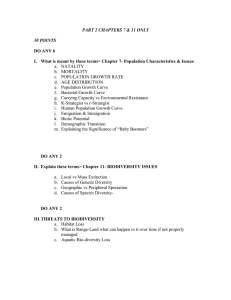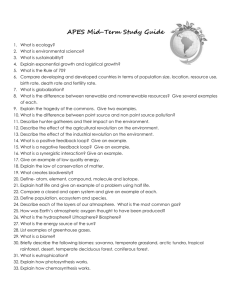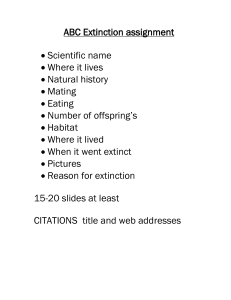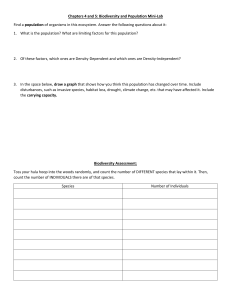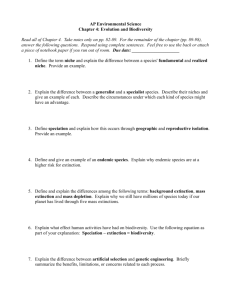Ecology & Biodiversity Test Review: Chapters 4, 5 & 9
advertisement
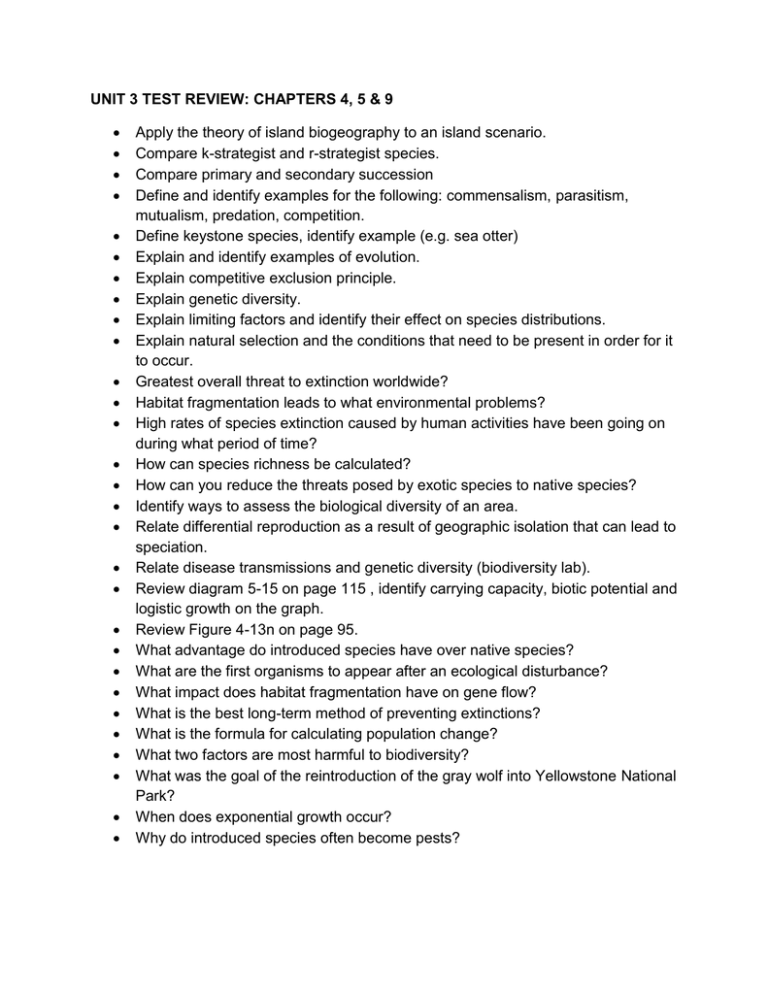
UNIT 3 TEST REVIEW: CHAPTERS 4, 5 & 9 Apply the theory of island biogeography to an island scenario. Compare k-strategist and r-strategist species. Compare primary and secondary succession Define and identify examples for the following: commensalism, parasitism, mutualism, predation, competition. Define keystone species, identify example (e.g. sea otter) Explain and identify examples of evolution. Explain competitive exclusion principle. Explain genetic diversity. Explain limiting factors and identify their effect on species distributions. Explain natural selection and the conditions that need to be present in order for it to occur. Greatest overall threat to extinction worldwide? Habitat fragmentation leads to what environmental problems? High rates of species extinction caused by human activities have been going on during what period of time? How can species richness be calculated? How can you reduce the threats posed by exotic species to native species? Identify ways to assess the biological diversity of an area. Relate differential reproduction as a result of geographic isolation that can lead to speciation. Relate disease transmissions and genetic diversity (biodiversity lab). Review diagram 5-15 on page 115 , identify carrying capacity, biotic potential and logistic growth on the graph. Review Figure 4-13n on page 95. What advantage do introduced species have over native species? What are the first organisms to appear after an ecological disturbance? What impact does habitat fragmentation have on gene flow? What is the best long-term method of preventing extinctions? What is the formula for calculating population change? What two factors are most harmful to biodiversity? What was the goal of the reintroduction of the gray wolf into Yellowstone National Park? When does exponential growth occur? Why do introduced species often become pests? AP Review Questions for Chapter 4 Pages 103A-103B 1. 2. 3. 4. 5. C D C C B 6. A 7. B 8. C 9. A 10. B 11. D 12. A 13. B AP Review Questions for Chapter 5 Pages 124A -124B 1. 2. 3. 4. 5. A D E A E 6. D 7. C 8. B 9. D 10. E 11. C 12. C 13. A AP Review Questions for Chapter 9 pages 216A 1. 2. 3. 4. C A D E 5. 6. 7. 8. C B A E 9. C 10. E 11. A 12. B

